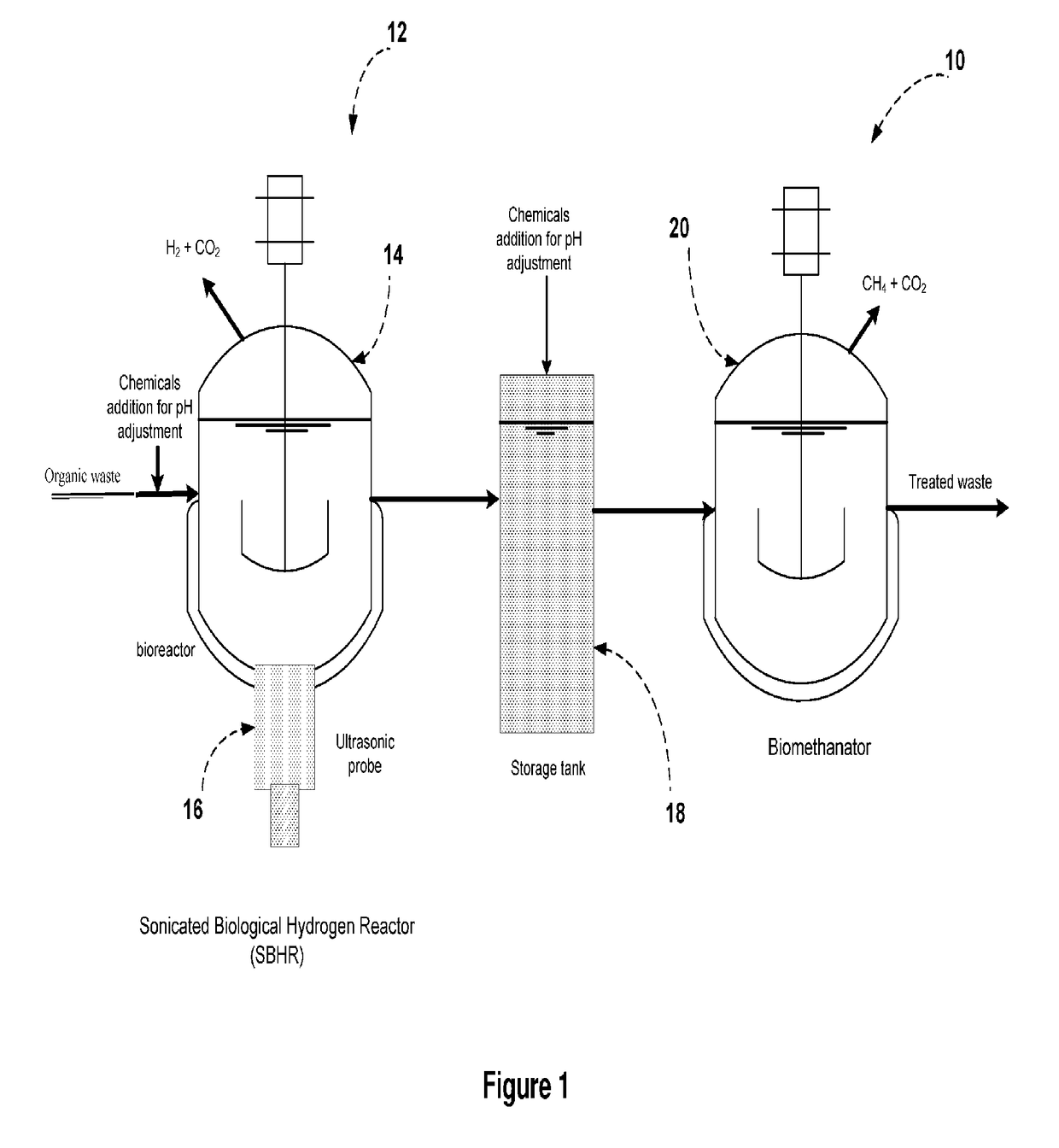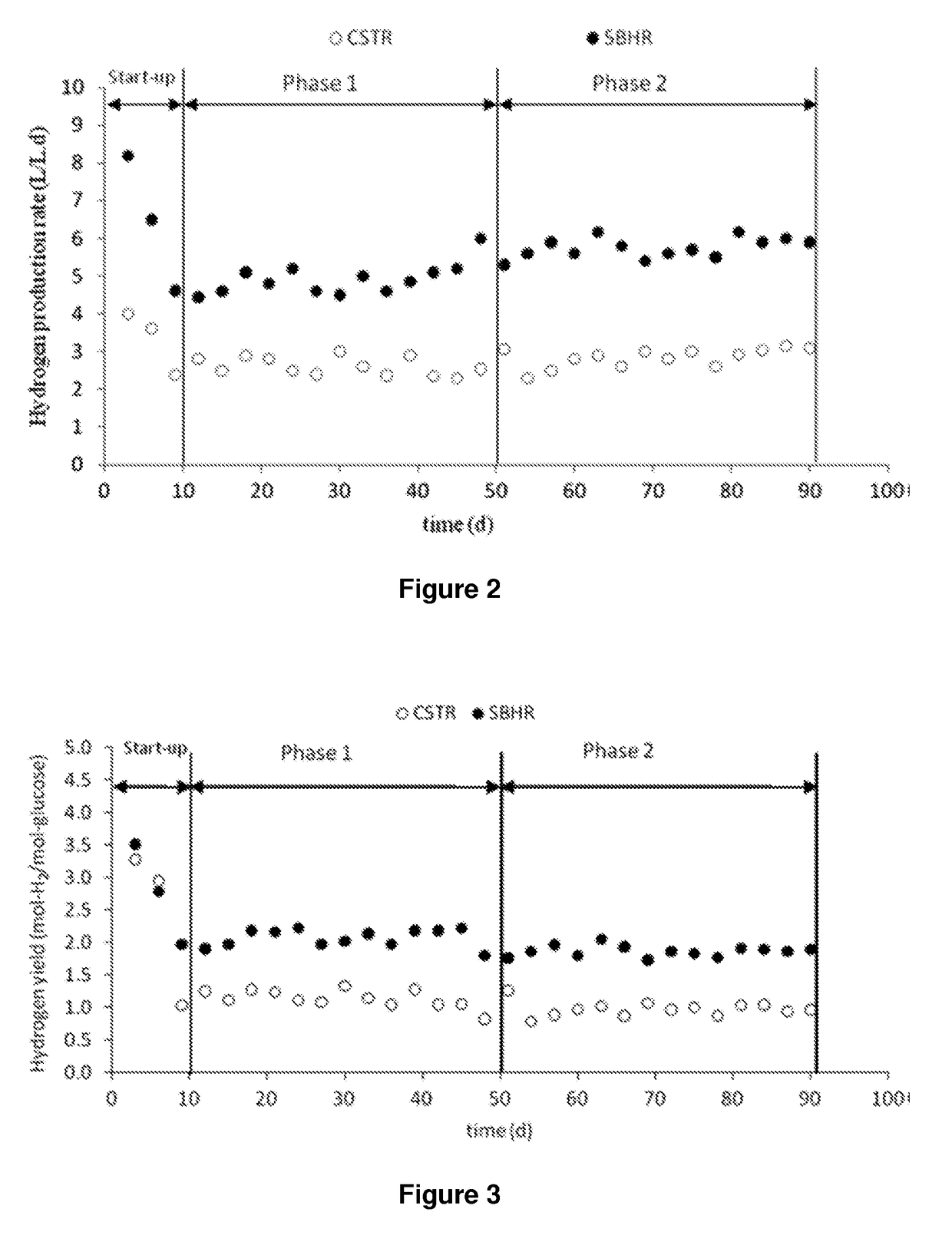Sonicated biological hydrogen reactor
a biological hydrogen and reactor technology, applied in the field of anaerobically digesting organic materials, can solve the problems of low production rate of biological hydrogen (hsub>2/sub>), unfavorable thermodynamics of 2 /sub>production reactions, and need further development. achieve the effect of reliably operating
- Summary
- Abstract
- Description
- Claims
- Application Information
AI Technical Summary
Benefits of technology
Problems solved by technology
Method used
Image
Examples
Embodiment Construction
[0047]Embodiments of the present invention are disclosed herein. However, the disclosed embodiments are exemplary, and it is to be understood that the invention may be embodied in many various and alternative forms. The Figures are intended to aid in the understanding of the invention and may not be to scale, with some features exaggerated or minimized. Therefore, specific structural and functional details disclosed herein are not to be interpreted as limiting but as a basis for the claims and as a representative basis for teaching one skilled in the art to variously employ the present invention.
[0048]The term “about”, when used in conjunction with ranges of dimensions, temperatures or other physical properties or characteristics is used as it would be by a skilled person in a similar context. Typically, the term is meant to cover slight variations that may exist in the upper and lower limits of the ranges of dimensions so as to not exclude embodiments where on average most of the d...
PUM
| Property | Measurement | Unit |
|---|---|---|
| hydraulic residence time | aaaaa | aaaaa |
| hydraulic residence time | aaaaa | aaaaa |
| temperature | aaaaa | aaaaa |
Abstract
Description
Claims
Application Information
 Login to View More
Login to View More - R&D
- Intellectual Property
- Life Sciences
- Materials
- Tech Scout
- Unparalleled Data Quality
- Higher Quality Content
- 60% Fewer Hallucinations
Browse by: Latest US Patents, China's latest patents, Technical Efficacy Thesaurus, Application Domain, Technology Topic, Popular Technical Reports.
© 2025 PatSnap. All rights reserved.Legal|Privacy policy|Modern Slavery Act Transparency Statement|Sitemap|About US| Contact US: help@patsnap.com



